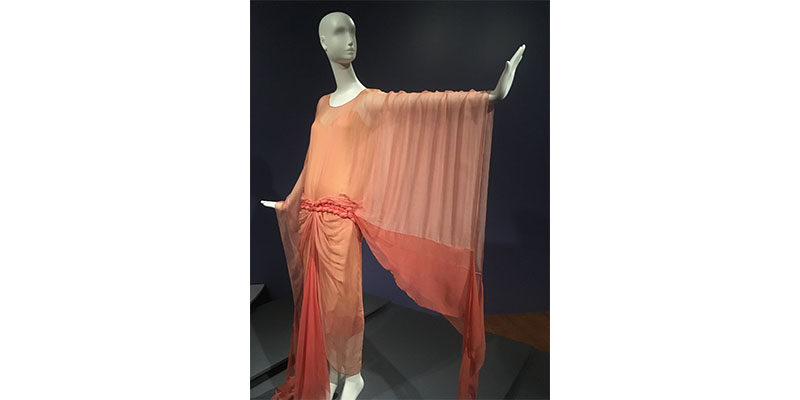- Events & Programs Home
- Calendar
- Accessibility
- Adults
-
Families & Teens
- Families & Teens Home
- 10x10 Teen Art Expo
- Art on the Rise
- Art Together: Art Making for Families with Children Ages 3–5
- Babies Sing with May Festival Minis
- Boy Scouts / Girl Scouts
- CAM Kids Day
- Family Storytime and Gallery Walk
- Family Studio: Art Making for Families with Children Ages 6–12
- Games in the Galleries
- Members-Only Baby Tours
- Public Baby Tours
- REC Reads
- Rosenthal Education Center (REC)
- Saturday Morning Art Class
- See Play Learn Kits
- Summer Camp
- Teen Fest: Zine and Comic Exchange
- RECreate
- Teachers
- Community Outreach
- Fundraisers
- Plan Your Own Event

- Events & Programs Home
- Calendar
- Accessibility
- Adults
-
Families & Teens
- Families & Teens Home
- 10x10 Teen Art Expo
- Art on the Rise
- Art Together: Art Making for Families with Children Ages 3–5
- Babies Sing with May Festival Minis
- Boy Scouts / Girl Scouts
- CAM Kids Day
- Family Storytime and Gallery Walk
- Family Studio: Art Making for Families with Children Ages 6–12
- Games in the Galleries
- Members-Only Baby Tours
- Public Baby Tours
- REC Reads
- Rosenthal Education Center (REC)
- Saturday Morning Art Class
- See Play Learn Kits
- Summer Camp
- Teen Fest: Zine and Comic Exchange
- RECreate
- Teachers
- Community Outreach
- Fundraisers
- Plan Your Own Event
Blog: CAM Uncovered
Blog: CAM Uncovered
- Home
- Plan Your Visit
- Art
-
Events & Programs
- Events & Programs Home
- Calendar
- Accessibility
- Adults
-
Families & Teens
- Families & Teens Home
- 10x10 Teen Art Expo
- Art on the Rise
- Art Together: Art Making for Families with Children Ages 3–5
- Babies Sing with May Festival Minis
- Boy Scouts / Girl Scouts
- CAM Kids Day
- Family Storytime and Gallery Walk
- Family Studio: Art Making for Families with Children Ages 6–12
- Games in the Galleries
- Members-Only Baby Tours
- Public Baby Tours
- REC Reads
- Rosenthal Education Center (REC)
- Saturday Morning Art Class
- See Play Learn Kits
- Summer Camp
- Teen Fest: Zine and Comic Exchange
- RECreate
- Teachers
- Community Outreach
- Fundraisers
- Plan Your Own Event
- Give & Join
- About
- Tickets
- Calendar
- Exhibitions
- Collections
- Blog
- Shop
Behind the Scenes in Conservation: 1920s Gown
by Conservation
7/3/2019
behind the scenes , textiles , conservation , gown , Kimono: Refashioning Contemporary Style

Evening Dress, E.L. Mayer, Inc. (estab. 1905, closed 1931), maker, 1927-1928, silk chiffon, silk crepe, Gift of Dorette Kruse Fleischmann in memory of Julius Fleischmann, 1991.200
Can you find the conservation that has been carried out for this silk chiffon gown from the 1920s? At first glance, it might look practically perfect. But if you pause to take a closer look while it is on display in Kimono: Refashioning Contemporary Style, you will find some traces of all the work that went into it before it could look this good.
To start with, one of the long, trailing sleeve sections in the darker orange fabric was missing! Only the torn edge caught in the stitch line remained. The textile conservator made a pattern of the missing piece based on the other sleeve, dyed silk chiffon to match the original color, and created a new sleeve section. Silk chiffon isn’t the most resilient material to make a dress from, so it wasn’t surprising that wearing it had probably damaged it in the past. Areas that would be under stress, such as shoulder areas and the waist seam, were damaged, torn, and sometimes virtually shredded. Repairing them was extra-challenging given the sheerness of the fabric. A patch had to be very thin and light or you would see it clearly through the original silk chiffon. A material called silk crepeline—a super-fine gauze--was used to patch these areas.
In some places, you can just make out the shadow of the crepeline behind the damaged areas it is supporting and filling. If you want to hunt for them during your next visit, there are patches in both shoulders, around the waist, and at the trailing tips of the sleeves and center drape, but you can also just stand back and enjoy this elegant object without ever knowing how hard we worked! See this object and others on display in Kimono: Refashioning Contemporary Style through September 15.
Cincinnati, OH 45202
Toll Free: 1 (877) 472-4226
Museum Hours
Museum Shop
Terrace Café
Library
Cincinnati Art Museum is supported by the tens of thousands of people who give generously to the annual ArtsWave Campaign, the region's primary source for arts funding.

Free general admission to the Cincinnati Art Museum is made possible by a gift from the Rosenthal Family Foundation. Exhibition pricing may vary. Parking at the Cincinnati Art Museum is free.
Generous support for our extended Thursday hours is provided by Art Bridges Foundation’s Access for All program.

General operating support provided by:



